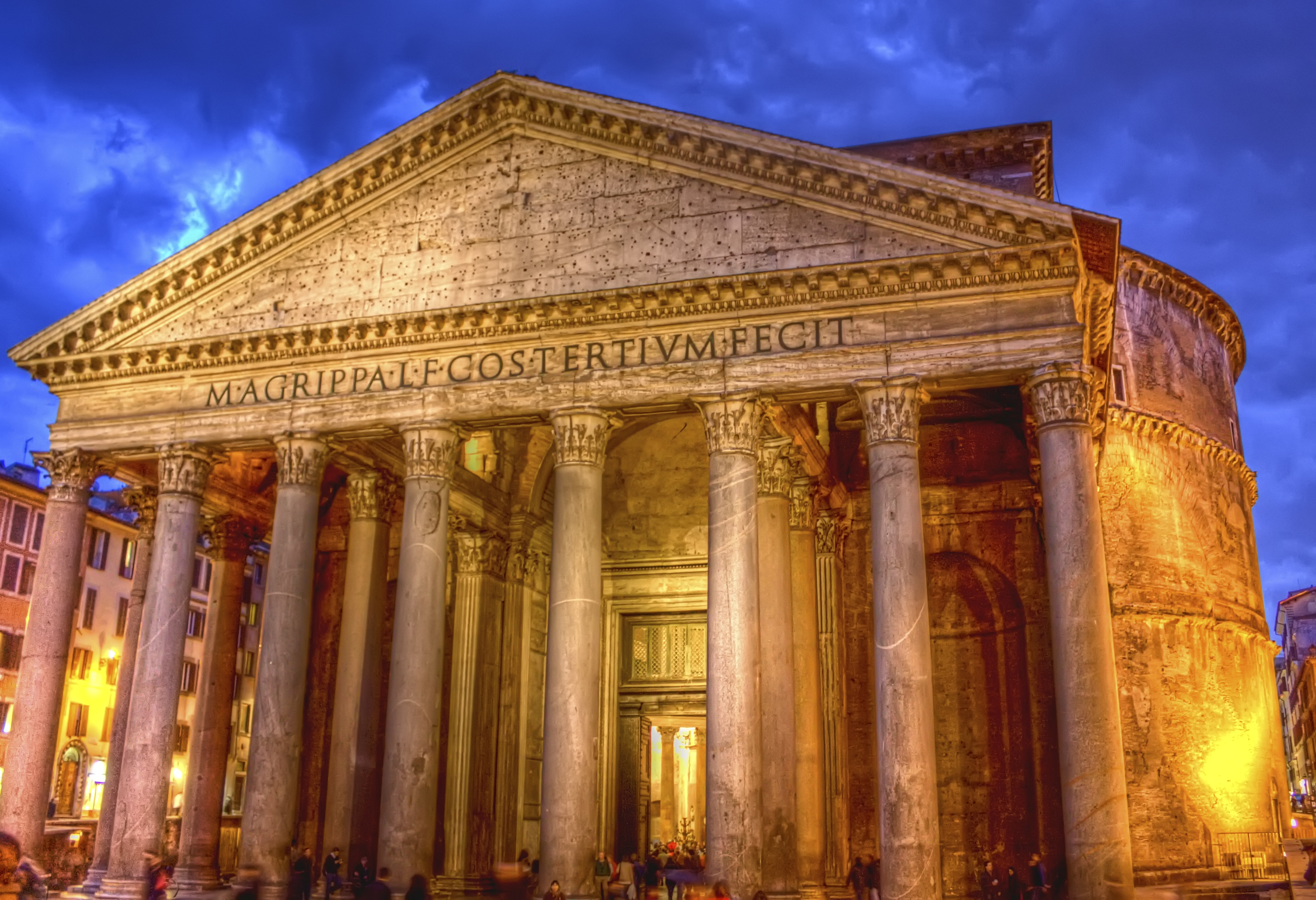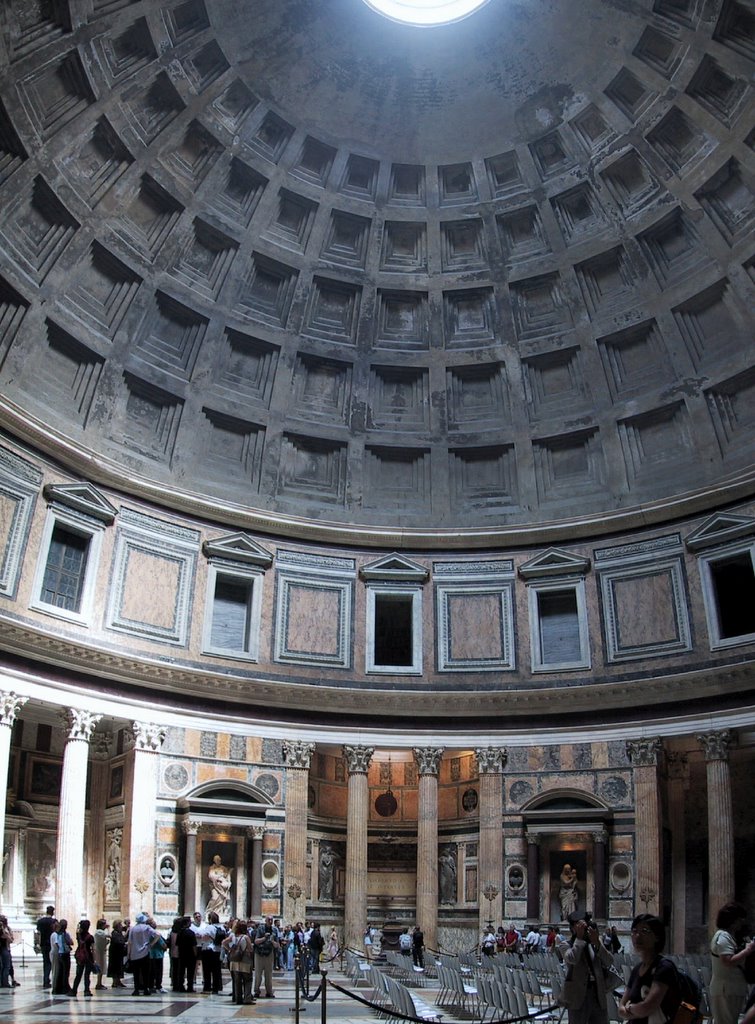My Private Twin Life The BestPreserved Pantheon
"M[arcus] Agrippa L[ucii] f[ilius] co[n]s[ul] tertium fecit," meaning "Marcus Agrippa, son of Lucius, made [this building] when consul for the third time - «.

"M. AGRIPPA L. F. COS. TERTIUM. FECIT" Pantheon… Flickr Photo Sharing!
inscription, M·AGRIPPA·L·F·COS·TERTIUM·FECIT, means: Marcus Agrippa, son of Lucius, consul for the third time, built this. The original Pantheon of Rome was.

M.AGRIPPA.L.F.COS.TERTIUM.FECIT. Michael Kalognomos Flickr
M·AGRIPPA·L·F·COS·TERTIVM·FECIT. or in full, "M[arcus] Agrippa L[ucii] f[ilius] co[n]s[ul] tertium fecit," meaning "Marcus Agrippa, son of Lucius, made [this building] when consul for the third time." However, archaeological excavations have shown that the Pantheon of Agrippa had been completely destroyed except for the façade.

M·AGRIPPA·L·F·COS·TERTIVM·FECIT or in full, "M[arcus] Agrippa L[ucii] f
Agrippa, a close friend of the emperor Augustus, did indeed build a sanctuary named Pantheon on the Field of Mars: a circular open air sanctuary that played a role in the cult for the emperor.. M. Agrippa L.f. cos. tertium fecit. This was in the year 27 BCE, but this is because Hadrian had the habit of reconstructing monuments under the.

M·AGRIPPA·L·F·COS·TERTIVM·FECIT Translation Marcus Agripp… Flickr
Its inscription, M·AGRIPPA·L·F·COS·TERTIUM·FECIT, means Marcus Agrippa, son of Lucius, consul for the third time, built this. Origin of the Pantheon in Rome . The original Pantheon of Rome was built between 27 & 25 BCE, under the consulship of Marcus Vipsanius Agrippa. It was dedicated to 12 gods of heaven and focused on Augustus' cult.

The Pantheon “M•AGRIPPA•L•F•COS•TERTIUM•FECIT” The Panthe… Flickr
The lower part of the pediment proclaims, in Latin "M.AGRIPPA.L.F.COS.TERTIUM.FECIT." Translated, this means "Marcus Agrippa, three times consul made this." This engraving was likely a remnant left over from Agrippa's original building. Or, Hadrian had it chisled on the building to tip his hat to Augustus.

Deneysel ve Nadir Bilgi M AGRİPPA L F COS TERTİVM FECİT Ne Demek
For many, the answer is Marcus Agrippa's inscription on the Pantheon: M AGRIPPA L F COS TERTIUM FECIT. Its great big black letters fill up the entire piazza, and manage to be grand and.

M. Agrippa L. F. Cos. Tertium. Fecit. Who wants... Latin Student Problems
Cos. tertium here dates the inscription: it refers to Agrippa's third term as consul. Finally, fecit is the past perfect tense of facere ("to make"); the full inscription can thus be translated as "Marcus Agrippa, the son of Lucius, made [this] when he was consul for the third time".

Keiser cat (19902007) M AGRIPPA L F COS TERTIVM FECIT
M. AGRIPPA L. F. COS. TERTIUM FECIT In Latin, fecit means "he made," so Marcus Agrippa is forever associated with the Pantheon's design and construction. Titus Flavius Domitianus, (or, simply Domitian) became Rome's Emperor and rebuilt Agrippa's work, but it, too burned down in about A.D. 110.

Panteon de Agrippa M.AGRIPPA.L.F.COS.TERTIUM.FECIT Marcus … Flickr
For many, the answer is Marcus Agrippa's inscription on the Pantheon: M AGRIPPA L F COS TERTIUM FECIT. Its great big black letters fill up the entire piazza and manage to be grand and overwhelming while also being austere and restrained. All it says is "Marcus Agrippa, son of Lucius ("Lucii filius"), consul for the third time, made this.

M.Agrippa.L.F.Cos.Tertium.Fecit Marcus Agrippa, the son of… Flickr
It reads: "M·AGRIPPA·L·F·COS·TERTIUM·FECIT" (Marcus Agrippa, son of Lucius, consul for the third time, built this.) The bronze doors, which were originally covered in gold, weigh 20 tons each and fortunately escaped melting down by later popes, as happened to the bronze roof.

M·AGRIPPA·L·F·COS·TERTIVM·FECIT roma Flickr
Built by Agrippa between 25 and 27 BC the Pantheon was a temple dedicated to the twelve Gods and to the living Sovran. Traditionally it is believed that the present building is result of the radical reconstruction by Hadrian between 118 and 125 AD.. "Marcus Agrippa Luci filius consul tertium fecit" translates as "Marco Agrippa, son of.

M AGRIPPA COS TERTIUM FECIT Fabiana Flickr
M. AGRIPPA L F COS TERTIVM FECIT = MARCVS AGRIPPA LUCI FILIUS CONSUL TERTIUM FECIT = "Marcus Agrippa, son of Lucius, Consul for the third time, made [this temple]". This is the dedicatory inscription used on the Hadrianic Pantheon. We believe it copies directly the inscription from the original Pantheon which had been built by Marcus Agrippa.

M. AGRIPPA L. F. COS. TERTIUM. FECIT by Joanna SzafarczykAhmad / 500px
The inscription at the entrance of the Pantheon reads, in Latin: "M.AGRIPPA.L.F.COS.TERTIUM.FECIT". It translates roughly as "Marcus Agrippa, son of Lucius, having been consul three times, made it (or Marcus Agrippa constructed this while being consul for the third time)". Although Emperor Hadrian rebuilt the Pantheon long after Agrippa.

M. Agrippa L. F. Cos. Tertium Fecit. Piazza della Rotonda … Flickr
M. AGRIPPA L.F. COS TERTIUM FECIT (Marcus Agrippa, son of Lucius, three-time consul, made this).. Below the main original inscription is a smaller one indicating the restorations carried out by Septimius Severus and Caracalla in 202 CE and reads:. pantheum vetustate corruptum cum omni cultu restituerunt

M.AGRIPPA.L.F.COS.TERTIUM.FECIT Roman empire, 27 BC Marcus… Flickr
Marcus Vipsanius Agrippa (/ ə ˈ ɡ r ɪ p ə /; c. 63 BC - 12 BC) was a Roman general, statesman and architect who was a close friend, son-in-law and lieutenant to the Roman emperor Augustus. Agrippa is well known for his important military victories, notably the Battle of Actium in 31 BC against the forces of Mark Antony and Cleopatra.He was also responsible for the construction of some.